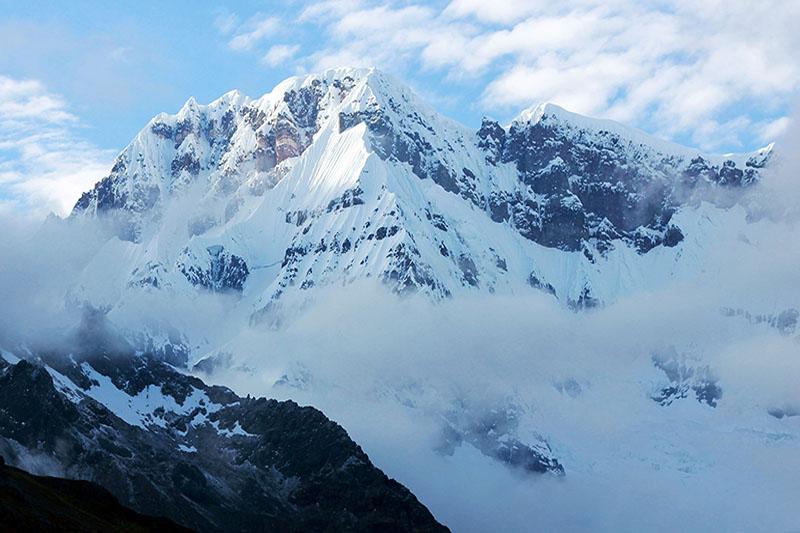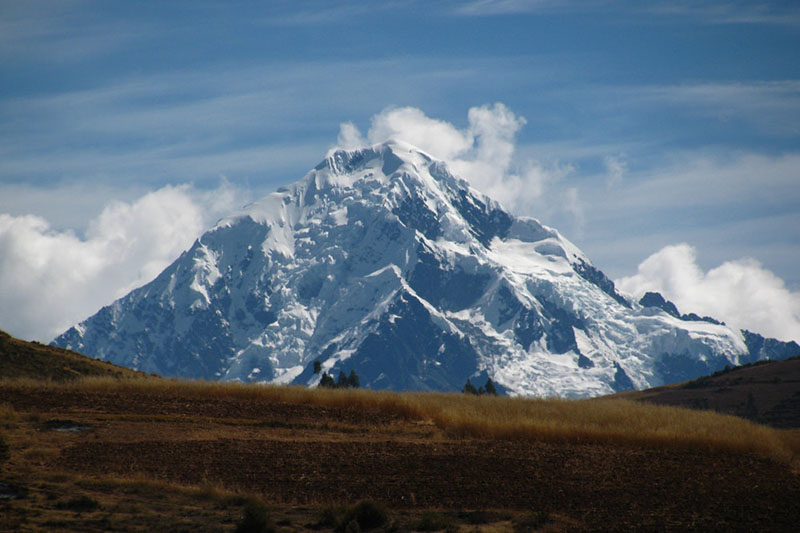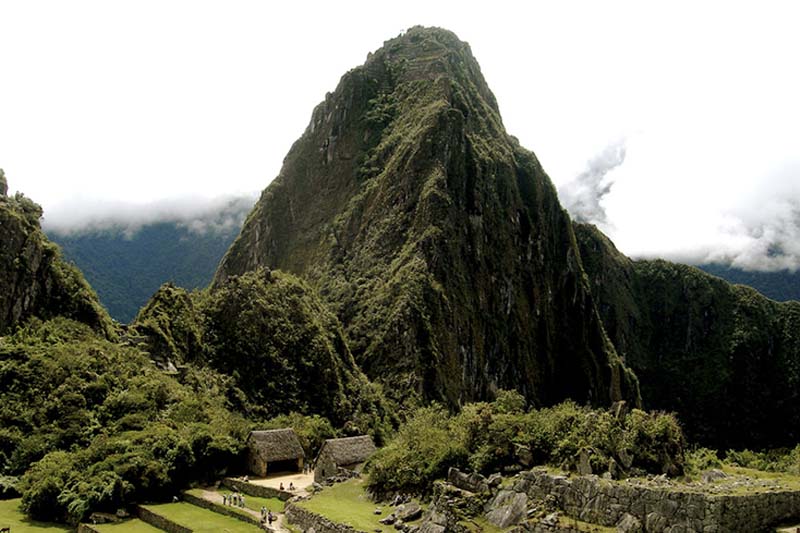Apus: The Spirits of the Mountain
On your trip to Machu Picchu in Peru and generally in the Andes Mountains, you will hear or read the word ‘Apu’. In Inca belief, ‘Apu’ was the name given to the mountain spirits. Today, many people in Peru continue to worship the mountains as sacred entities.
- What are the ‘Apus’?
- How did the Incas worship the ‘Apus’?
- These are the most important ‘Apus’ of the Incas
- The Apus in modern Peru
- The Apus in the visit to Machu Picchu
- The ‘Apu’ Machu Picchu
- Other meanings of ‘Apu’
- Frequently asked questions about the mountains in the Inca era

Apu Ausangate. One of the main divinities of the Inca Cusco
The main mountains or ‘Apus’ of Cusco are: the Ausangate, the Salkantay as well as the Machu Picchu mountain. This last summit gave the name to the current Inca City, one of the 7 Wonders of the World.
What are the ‘Apus’?
- ‘Apu’ is a Quechua word that means ‘Lord’. The Incas used it to name the mountains and snow-capped mountains of great importance.
- The ‘Apus’ were protective spirits and watched over the people in their territory, their livestock and their crops.
- According to the cosmovision of the Andean man (before, during and after the Incas), the mountains were divine entities that ruled over the destiny of human beings.
- For the Andean man, each mountain has its own spirit, its own name and its own domain which they protect. Thus, each region has its own ‘Apu’ or protective mountain.
- ‘Apus’ were typically male spirits although female deities also exist.
- The Incas believed that the taller the ‘Apus’, the greater their importance.
How did the Incas worship the ‘Apus’?
- According to the Incas, the universe was divided into three kingdoms: Hanan Pacha (superior kingdom / kingdom of the gods), Kay Pacha (kingdom of men) and Uku Pacha (the lower realm or underworld).
- The mountains rise from the Kay Pacha to the Uku Pacha. Thus the Incas had the possibility of communicating with their gods.
- People worshiped the ‘Apus’ with chicha (corn liquor), llama tallow and coca leaves. In addition, the Incas performed human sacrifices (Capacocha).
- Generally, these sacrifices were made in the highest snow-capped peaks.
- One of the most important discoveries was the discovery of the ‘Mummy Juanita’ (also known as the ‘Lady of Ampato’). The body of this girl was found in 1995 at the top of Mount Ampato in 1995.

Awesome! Apu Salkantay
These are the most important ‘Apus’ of the Incas
In Cuzco:
- Salkantay.
- Ausangate.
In other regions of Peru:
- Sara Sara (Ayacucho).
- Coropuna (Arequipa).
- Ampato (Arequipa).
- Misti (Arequipa).
- Chachani (Arequipa).
- Huarancante (Arequipa).
- Hualca Hualca (Arequipa).
- Allincapac (Puno).
- Ccarhuarazo (Ayacucho).
- Rasuwillka (Ayacucho).
In Chile:
- Paniri (Antofagasta).
- Licancabur (Antofagasta).
- Copiapo (Atacama).
- El Plomo (Santiago, Chile).
In Argentina:
- Chañi (Jujuy).
- Quehuar (Salta).
- Aconcagua (Mendoza).
- Chuscha (Jump).
The Apus in modern Peru
- Although the empire of the Incas disappeared more than 5 centuries ago, know that the cult of the ‘Apus’ does not disappear.
- Peruvians today, especially those raised in traditional Andean communities, still hold to these beliefs in Inca times.
- However, the ancestral beliefs of the Andean world coexist with the Christian traditions brought with the Spanish conquest.
The Apus in the visit to Machu Picchu
- A good option to observe the Andean belief of the ‘Apus’ is to do the Inca Trail. During this 4-day, 3-night trek to Machu Picchu, tour guides and visitors learn about the daily rituals that are performed on the ‘Apus’.
- In Cusco, the ancient capital of the Incas, it is protected by several sacred ‘Apus’ such as: the Ausangate (6,384 masl) and the Salkantay (6,271 masl).
- Likewise, the Incas who inhabited the ‘Inca City’ worshiped the Machu Picchu mountain (3,082 meters above sea level) and the Huayna Picchu (2,720 meters above sea level).

Huayna Picchu, sacred mountain of the Incas
The ‘Apu’ Machu Picchu
- Machu Picchu is located in the eastern part of the Andes Mountains. The Inca City is surrounded by 3 mountains: Machu Picchu, Huayna Picchu and the Putucusi.
- Like Machu Picchu, the Incas built their main citadels on the slopes of high mountains. Thus, they could worship the mountains and the sun.
- On the slopes of the Machu Picchu and Huayna Picchu mountains, the Incas built stairways to the top to perform rituals in honor of the ‘Apus’.
The Huayna Picchu mountain is one of the most important tourist attractions in Machu Picchu. Climbing to the top is one of the most incredible short hikes on the planet. There the Incas built their famous ‘Temple of the Moon’.
Other meanings of ‘Apu’
- The word ‘Apu’ is also used to describe a great lord or other figure of authority.
- During the time of the Incas, the rulers of the 4 of the Tahuantinsuyo (4 parts of the empire), received the title of the ‘Apus’.
- In Quechua, the term ‘Apu’ has many meanings including chief, rich, powerful or the same in feminine.
Frequently asked questions about the mountains in the Inca era
1) Did the Incas worship the mountains?
The Incas worshiped the mountains. For them the mountains were ‘apus’ or great lords who deserved respect and veneration because they decided on the future of the people. This worship comes from many centuries before the Incas and continues to this day in the culture of the peoples of the Andes Mountains.
2) Who are the most important apus or mountains for the Incas?
For the Incas, the highest mountains were the most powerful apus. Thus, the most important mountains are: Aconcagua (Mendoza), Chuscha (Salta), Plomo (Santiago de Chile), Coropuna (Arequipa), Ausangate (Cusco), etc.
3) Did the apus communicate with the Incas?
The priests or shamans were in charge of carrying out the ceremonies of payment to the land. They indicated what the mountains requested. Until today in the Andean culture there is the belief of shamanism and communication with the mountains.
4) What is the most important apu in Cusco?
The snow-capped mountains Ausangate (6,384 masl) and Salkantay (6,271), being the highest in the Cusco region, were the most important and powerful in the Inca worldview.
5) What offerings did the Incas give to the apus?
The Incas used to provide offerings of coca leaves, animal bait, llama sacrifices, and even child sacrifice through the capacocha ritual.
6) Are offerings still made to the mountains today?
Yes, many towns and communities in the Andes Mountains maintain the tradition of making offerings to the mountains. From simple greetings of respect to rituals with offerings of coca leaves, just like the Incas did.
7) What does the word apu mean?
Apu is a Quechua word that means ‘Lord’. The Incas used it to name the mountains and snow-capped mountains of great importance.
8) Was Machu Picchu an apu?
Machu Picchu is a mountain or ‘apu’ that was considered important by the Incas. This is demonstrated by the offerings that were made in the Inca citadel of Machu Picchu as well as on the tops of the Huayna Picchu, Machupicchu and other mountains.
Advice from people who have been there
 By: Misael S
By: Misael S“Vertigo“
“The ascent is by winding stairs that take the breath, and not allowed if you have vertigo because you are continuously seeing the abyss. Now that once you get it, you have a unique view, you will be very lucky if you get the tickets spent 4 months before. Only 400 people can go up to Huayna Picchu every day and Machu Picchu can only enter 2500“
By Ticket Machu Picchu – Last updated, August 15, 2024